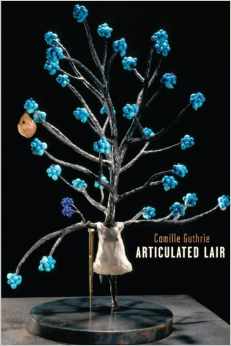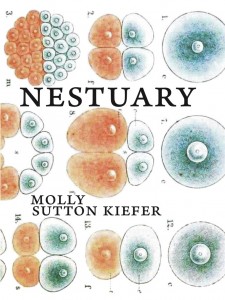
Subpress Collective
56 pages, $15
Review by Molly Sutton Kiefer
Louise Bourgeois is said to be a founder of confessional art; her sculptures are terrifying and stunning. In a discussion on The Rumpus, Guthrie revealed that Articulated Lair, which is named for an installation made up of a sequence of black and white angled dividers and a single black stool, started as a seed when she was in graduate school in 1996. These poems developed over the years, and while other projects shimmied forward faster, she continued to develop her LB poems gradually, returning in meditation, in compulsion. In the author’s note: “A desire to write about the Cells turned into a practice.” These Cells are a sequence of glassed- or caged-in sculptures surrounding found objects. I imagine Guthrie collecting stark lines on slips of paper, scattering these pieces on her kitchen table late at night, each slip lamp-lit, casting shadows just as the statues do.
The Cells act as a kind of anchor, taking up more pages than any other of Louise Bourgeois’ artwork. The Cells themselves are interactive—one peers into or walks into the art space itself, bringing forth the experience of the voyeur as the seer looks upon personal and found objects meant to evoke pain and fear. The gaze, then, is implicit in the poems, and reversed in lines such as “target-hearted / refracting a silver-gate” and “the second-mirror / eclipses your thoughts / promising vanities.” There is a looking-back, an importance of reflection. Continue reading →
![[PANK]](https://pankmagazine.com/wp-content/themes/pank/assets/images/pank-logo-large.png)


